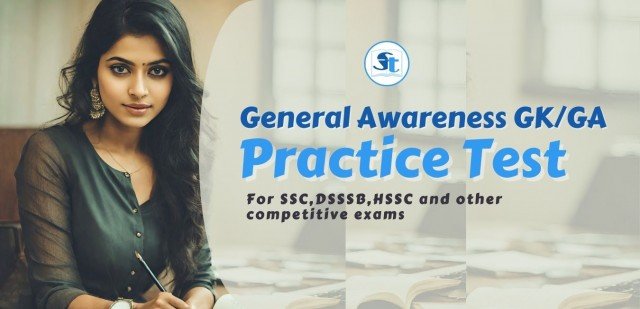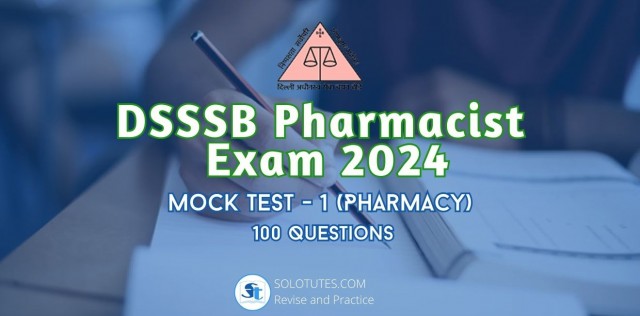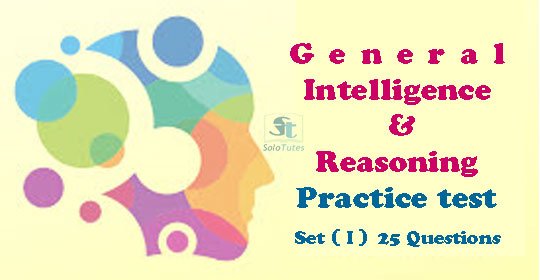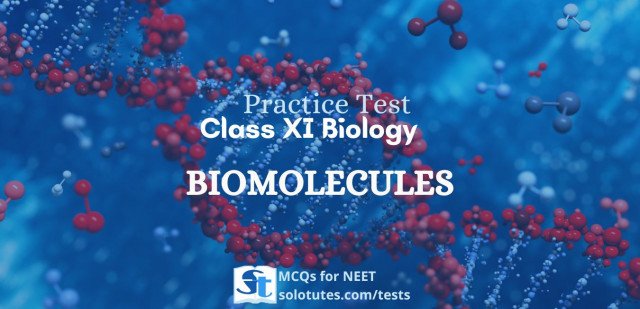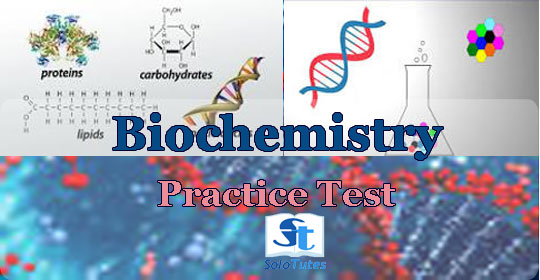Human Anatomy and Physiology One Liners
terms related to Human Anatomy and physiology (one liners)
Read, revise and let us know your feedback by leaving a comment below.
〉
--
Human Anatomy and Physiology Practice MCQs
1 of 171
Q.1 A person living at a high altitude will have-
- High alveolar capacity
- More erythrocytes
- Haemoglobin curve shifted towards right
- All of these
Answer ✔ (d) All of these
Human Anatomy and Physiology • Class 12th • NORCET • Pharmacist Competitive Exams • Nurse Competitive Exams
2 of 171
Q.2 The exchange of gases in the alveoli of the lungs takes place by-
- Simple diffusion
- Osmosis
- Passive transport
- Active transport
Answer ✔ (a) Simple diffusion
Explanation: The exchange of gases in the alveoli of the lungs takes place by Simple diffusion.
Human Anatomy and Physiology • Class 12th • NORCET • Pharmacist Competitive Exams • Nurse Competitive Exams
3 of 171
Q.3 Lungs are enclosed in-
- Pericardium
- Peritoneum
- Pleura
- Perichondrium
Answer ✔ (c) Pleura
Human Anatomy and Physiology • Class 12th • NORCET • Pharmacist Competitive Exams • Nurse Competitive Exams
4 of 171
Q.4 Pasteurization of milk means-
- All bacteria are killed
- Milk is enriched with vitamins
- Pathogenic bacteria are killed
- Milk casein is partially digested
Answer ✔ (a) All bacteria are killed
Explanation: The pasteurization technique is used to kill all the bacteria in the milk.
Human Anatomy and Physiology • Class 12th • NORCET • Pharmacist Competitive Exams • Nurse Competitive Exams
5 of 171
Q.5 Haemoglobin - oxygen dissociation curve is-
- Hyperbolic
- Straight
- Sigmoid
- Constant
Answer ✔ (c) Sigmoid
Human Anatomy and Physiology • Class 12th • NORCET • Pharmacist Competitive Exams • Nurse Competitive Exams
6 of 171
Q.6 Arytenoid cartilage occurs in-
- Nose
- Larynx
- Hyoid
- Sternum
Answer ✔ (b) Larynx
Human Anatomy and Physiology • Class 12th • NORCET • Pharmacist Competitive Exams • Nurse Competitive Exams
7 of 171
Q.7 Respiratory Quotient (RQ) is less than 1 for -
- Potato
- Citrus Fruits
- Castor seeds
- Banana
Answer ✔ (c) Castor seeds
Human Anatomy and Physiology • Class 12th • NORCET • Pharmacist Competitive Exams • Nurse Competitive Exams
8 of 171
Q.8 A pacemaker is implanted when one of these is defective-
- SA node
- AV node
- Purkinje fibres
- Bundle of lines
Answer ✔ (a) SA node
Explanation: When SA node in the heart defects then pacemaker is implanted
Human Anatomy and Physiology • Class 12th • NORCET • Pharmacist Competitive Exams • Nurse Competitive Exams
9 of 171
Q.9 Circulation of blood was discovered by-
- Darwin
- Harvey
- Aristotle
- Pasteur
Answer ✔ (b) Harvey
Human Anatomy and Physiology • Class 12th • NORCET • Pharmacist Competitive Exams • Nurse Competitive Exams
10 of 171
Q.10 The sensation of stomach pain is due to-
- Interoreceptors
- Exteroreceptors
- Proprioreceptors
- Teloreceptors
Answer ✔ (a) Interoreceptors
Human Anatomy and Physiology • Class 12th • NORCET • Pharmacist Competitive Exams • Nurse Competitive Exams
11 of 171
Q.11 Arbor vitae is mainly composed of-
- Gray Matter
- Neuroglial cells
- White matter
- All of these
Answer ✔ (c) White matter
Explanation: The arbor vitae /ˌɑːrbɔːr ˈvaɪtiː/ (Latin for "tree of life") is the cerebellar white matter, so called for its branched, tree-like appearance.

Human Anatomy and Physiology • Class 12th • NORCET • Pharmacist Competitive Exams • Nurse Competitive Exams
12 of 171
Q.12 Atoconium is found in-
- Perilymph
- Haemolymph
- Synovial fluid
- Otolithic membrane
Answer ✔ (d) Otolithic membrane
Explanation: The otolithic membrane is a fibrous structure located in the vestibular system of the inner ear. It plays a critical role in the brain's interpretation of equilibrium. Otoconia are crystals of calcium carbonate found in the otolithic membrane on the surface of maculae of the inner ear.
Human Anatomy and Physiology • Class 12th • NORCET • Pharmacist Competitive Exams • Nurse Competitive Exams
13 of 171
Q.13 Eyelashes are lubricated by-
- Ceruminous glands
- Meibomian glands
- Lacrymal glands
- All of these
Answer ✔ (b) Meibomian glands
Explanation: Meibomian glands are the tiny oil glands that line the margin of the eyelids (the edges which touch when the eyelids are closed). Ceruminous glands are present in the outer auditory canal which produces wax. Lacrymal glands are responsible for the secretion of tears.
Human Anatomy and Physiology • Class 12th • NORCET • Pharmacist Competitive Exams • Nurse Competitive Exams
14 of 171
Q.14 Structure connected with vision in rabbit is-
- Corpus callosum
- Corpus albicans
- Hippocampus
- Corpora quadrigeuina
Answer ✔ (d) Corpora quadrigeuina
Human Anatomy and Physiology • Class 12th • NORCET • Pharmacist Competitive Exams • Nurse Competitive Exams
15 of 171
Q.15 Organs of Ruffini are receptors of-
- Cold
- Pressure
- Heat
- Touch
Answer ✔ (c) Heat
Human Anatomy and Physiology • Class 12th • NORCET • Pharmacist Competitive Exams • Nurse Competitive Exams
16 of 171
Q.16 Which of the following cranial nerves of man is Both sensory or motor?
- Optic
- Vagus
- Olfactory
- Trigeminal
Answer ✔ (b) Vagus
Explanation: Vagus is the 10th and longest cranial nerve. It contains motor and sensory fibers and, because it passes through the neck and thorax to the abdomen, has the widest distribution in the body
Human Anatomy and Physiology • Class 12th • NORCET • Pharmacist Competitive Exams • Nurse Competitive Exams
17 of 171
Q.17 Cardiac cycle in man takes about-
- 0.5 seconds
- 1.2 seconds
- 1.0 seconds
- 0.8 seconds
Answer ✔ (d) 0.8 seconds
Human Anatomy and Physiology • Class 12th • NORCET • Pharmacist Competitive Exams • Nurse Competitive Exams
18 of 171
Q.18 RBCs are generally destroyed in the liver, while WBCs are destroyed in-
- Plasma
- Lymph
- Inside various cells of body
- Out side the blood stream
Answer ✔ (b) Lymph
Human Anatomy and Physiology • Class 12th • NORCET • Pharmacist Competitive Exams • Nurse Competitive Exams
19 of 171
Q.19 The hormone responsible for urine concentration is-
- Vasopressin
- Pitocin
- Thyroxine
- Renin
Answer ✔ (a) Vasopressin
Human Anatomy and Physiology • Class 12th • NORCET • Pharmacist Competitive Exams • Nurse Competitive Exams
20 of 171
Q.20 Gigantism and acromegaly result from hypersecretion of-
- ADH
- GH
- STH
- None of the above
Answer ✔ (b) GH
Explanation: Gigantism acromegaly results due to the hypersecretion of growth hormone.
Human Anatomy and Physiology • Class 12th • NORCET • Pharmacist Competitive Exams • Nurse Competitive Exams
21 of 171
Q.21 Emergency gland of blood is-
- Thymus
- testis
- Adrenal
- Pituitary
Answer ✔ (c) Adrenal
Explanation: Adrenal glands are called glands of emergency. These glands are located on the top of each kidney and are responsible for the secretion of adrenaline hormone in the bloodstream in emergency (flight or flight situation).
Human Anatomy and Physiology • Class 12th • NORCET • Pharmacist Competitive Exams • Nurse Competitive Exams
22 of 171
Q.22 The calcium level in the blood can be increased by administration of-
- Glucagon
- Thyroxine
- Parathormone
- Clcitonin
Answer ✔ (c) Parathormone
Explanation: Parathormone is responsible for the increase in calcium concentration in blood while calcitonin is responsible for the decrease in the calcium concentration.
Human Anatomy and Physiology • Class 12th • NORCET • Pharmacist Competitive Exams • Nurse Competitive Exams
23 of 171
Q.23 Shape of an Eye is maintained by-
- Aqueous Humour
- Vitreous humour
- Conjunctiva
- All of these
Answer ✔ (b) Vitreous humour
Human Anatomy and Physiology • Class 12th • NORCET • Pharmacist Competitive Exams • Nurse Competitive Exams
24 of 171
Q.24 RBCs in the mammals have no nucleus because -
- it has degenerated during development
- they do not have nucleus since early
- nucleus is harmful for RBCs
- Nucleus decrease surface area
Answer ✔ (d) Nucleus decrease surface area
Human Anatomy and Physiology • Class 12th • NORCET • Pharmacist Competitive Exams • Nurse Competitive Exams
25 of 171
Q.25 Which of the following are respiratory organs of scorpions?
- Lungs
- Book-lungs
- Gills
- Ctenidia
Answer ✔ (b) Book-lungs
Human Anatomy and Physiology • Class 12th • NORCET • Pharmacist Competitive Exams • Nurse Competitive Exams
26 of 171
Q.1 A person with sickle cell anaemia is
- more prone to malaria
- more prone to typhoid
- less prone to malaria
- less prone to typhoid
Answer ✔ (c) less prone to malaria
Explanation: A person with sickle cell anaemia is less prone to malaria
General Science • Biology • Health Education • Human Anatomy and Physiology • Zoology • Class 12th • NEET UG • NEET UG Preparation
27 of 171
Q.2 Which one of the following disease is non – communicable ?
- Diphtheria
- Flu
- Cancer
- Malaria
Answer ✔ (c) Cancer
Explanation: Cancer
General Science • Biology • Health Education • Human Anatomy and Physiology • Zoology • Class 12th • NEET UG • NEET UG Preparation
28 of 171
Q.3 Which of the following pairs contains an infectious and a non-infectious disease respectively ?
- Typhoid and AIDS
- AIDS and cancer
- Pneumonia and malaria
- Cancer and malaria
Answer ✔ (b) AIDS and cancer
Explanation: AIDS and cancer contains an infectious and a non-infectious disease respectively
General Science • Biology • Health Education • Human Anatomy and Physiology • Zoology • Class 12th • NEET UG • NEET UG Preparation
29 of 171
Q.4 Typhoid fever in human beings is caused by
- Plasmodium vivax
- Trichophyton
- Salmonella typhi
- Rhinoviruses
Answer ✔ (c) Salmonella typhi
Explanation: Typhoid fever in human beings is caused by Salmonella typhi
General Science • Biology • Health Education • Human Anatomy and Physiology • Zoology • Class 12th • NEET UG • NEET UG Preparation
30 of 171
Q.5 Which of the following is the bacterial disease in humans ?
- Dysentery
- Malaria
- Plague
- Both (a) & (c)
Answer ✔ (d) Both (a) & (c)
Explanation: Both (a) & (c) is the bacterial disease in humans
General Science • Biology • Health Education • Human Anatomy and Physiology • Zoology • Class 12th • NEET UG • NEET UG Preparation
31 of 171
Q.6 Which of the following pathogens causes whooping coough ?
- Legionella spp.
- Burcella melitensis
- Vibrio cholerae
- Burcella melitensis
Answer ✔ (b) Burcella melitensis
Explanation: Burcella melitensis causes whooping coough
General Science • Biology • Health Education • Human Anatomy and Physiology • Zoology • Class 12th • NEET UG • NEET UG Preparation
32 of 171
Q.7 Which one of the following sets includes bacterial diseases ?
- Tetanus, tuberculosis, measles
- Diptheria, leprosy, plague
- Cholera, typhoid, mumps
- Malaria, mumps, poliomyelits
Answer ✔ (b) Diptheria, leprosy, plague
Explanation: Diptheria, leprosy, plague sets includes bacterial diseases
General Science • Biology • Health Education • Human Anatomy and Physiology • Zoology • Class 12th • NEET UG • NEET UG Preparation
33 of 171
Q.8 The common cold is caused by
- Rhino viruses
- Streptococcus pnemoniae
- Salmonella typhimurium
- Plasmodium vivax.
Answer ✔ (a) Rhino viruses
Explanation: The common cold is caused by Rhino viruses.
General Science • Biology • Health Education • Human Anatomy and Physiology • Zoology • Class 12th • NEET UG • NEET UG Preparation
34 of 171
Q.9 Hepatitis B is transmitted through
- sneezing
- female Anopheles
- coughing
- blood transfusion
Answer ✔ (b) female Anopheles
Explanation: female Anopheles
General Science • Biology • Health Education • Human Anatomy and Physiology • Zoology • Class 12th • NEET UG • NEET UG Preparation
35 of 171
Q.10 A toxic substance, responsible for the chills and high fever recurring every three to four days in malarial fever, is
- interferon
- haemozoin
- hirudin
- colostrum
Answer ✔ (b) haemozoin
Explanation: haemozoin
General Science • Biology • Health Education • Human Anatomy and Physiology • Zoology • Class 12th • NEET UG • NEET UG Preparation
36 of 171
Q.11 Humoral immunity is associated with
- T-cells
- B-cells
- macrophages
- both (a) and (b)
Answer ✔ (b) B-cells
Explanation: Humoral immunity is associated with B-cells
General Science • Biology • Health Education • Human Anatomy and Physiology • Zoology • Class 12th • NEET UG • NEET UG Preparation
37 of 171
Q.12 The antibody which can cross placental barrier is
- IgA
- JgE
- IgM
- IgG
Answer ✔ (d) IgG
Explanation: IgG
General Science • Biology • Health Education • Human Anatomy and Physiology • Zoology • Class 12th • NEET UG • NEET UG Preparation
38 of 171
Q.13 The most abundant class of immunoglobulins (Igs) in the body is
- IgA
- IgG
- IgE
- IgM
Answer ✔ (b) IgG
Explanation: IgG
General Science • Biology • Health Education • Human Anatomy and Physiology • Zoology • Class 12th • NEET UG • NEET UG Preparation
39 of 171
Q.14 A protein or polysaccharide molecule that stimulates antibody formation.
- antigen
- antibiotics
- exotoxin
- endotoxins
Answer ✔ (a) antigen
Explanation: A protein or polysaccharide molecule that stimulates antibody formation is known as antigen
General Science • Biology • Health Education • Human Anatomy and Physiology • Zoology • Class 12th • NEET UG • NEET UG Preparation
40 of 171
Q.15 Passive immunity can be conferred directly by
- vaccines
- antitoxins
- colostrum
- both (b) & (c)
Answer ✔ (d) both (b) & (c)
Explanation: both (b) & (c)
General Science • Biology • Health Education • Human Anatomy and Physiology • Zoology • Class 12th • NEET UG • NEET UG Preparation
41 of 171
Q.16 Which form of pathogen is used in vaccination ?
- Activated and strong pathogenic antigens
- Inactivated and weakened pathogenic antigens
- Hyperactive and strong pathogen
- Preformed antibodies
Answer ✔ (b) Inactivated and weakened pathogenic antigens
Explanation: Inactivated and weakened pathogenic antigens
General Science • Biology • Health Education • Human Anatomy and Physiology • Zoology • Class 12th • NEET UG • NEET UG Preparation
42 of 171
Q.17 Injection of antitoxin in tetanus confers which type of immunisation ?
- Active immunisation
- Passive immunisation
- Auto-immunisation
- Humoral immunisation
Answer ✔ (b) Passive immunisation
Explanation: Passive immunisation
General Science • Biology • Health Education • Human Anatomy and Physiology • Zoology • Class 12th • NEET UG • NEET UG Preparation
43 of 171
Q.18 The term ‘antitoxin’ refers to a preparation containing
- B-lymphoctyes and T-lymphocytes
- antibodies to the toxin
- weakend pathogen
- inactivated T-lymphocytes.
Answer ✔ (b) antibodies to the toxin
Explanation: The term ‘antitoxin’ refers to a preparation containing antibodies to the toxin
General Science • Biology • Health Education • Human Anatomy and Physiology • Zoology • Class 12th • NEET UG • NEET UG Preparation
44 of 171
Q.19 Vaccine against polio viruses is an example of
- auto-immunisation
- passive immunisation
- active immunisation
- simple immunisation
Answer ✔ (c) active immunisation
Explanation: active immunisation
General Science • Biology • Health Education • Human Anatomy and Physiology • Zoology • Class 12th • NEET UG • NEET UG Preparation
45 of 171
Q.20 During the life cycle of Plasmodium, sexual reproduction takes place in which of the following hosts ?
- Human
- Female Anopheles mosquito
- Male Anopheles mosquito
- Both (a) and (b)
Answer ✔ (b) Female Anopheles mosquito
Explanation: During the life cycle of Plasmodium, sexual reproduction takes place in Female Anopheles mosquito
General Science • Biology • Health Education • Human Anatomy and Physiology • Zoology • Class 12th • NEET UG • NEET UG Preparation
46 of 171
Q.21 Amoebic dysentery (amoebiasis) is caused by
- Entamoeba histolytica
- E. coli
- Streptococcus pneumoniae
- Trichophyton
Answer ✔ (a) Entamoeba histolytica
Explanation: Amoebic dysentery (amoebiasis) is caused by Entamoeba histolytica
General Science • Biology • Health Education • Human Anatomy and Physiology • Zoology • Class 12th • NEET UG • NEET UG Preparation
47 of 171
Q.22 Which one of the following diseases cannot be cured by taking antibiotics ?
- Plague
- Amoebiasis
- Leprosy
- Whooping cough
Answer ✔ (b) Amoebiasis
Explanation: Amoebiasis cannot be cured by taking antibiotics
General Science • Biology • Health Education • Human Anatomy and Physiology • Zoology • Class 12th • NEET UG • NEET UG Preparation
48 of 171
Q.23 Elephantiasis, a chronic inflammation that results in gross deformities is caused by
- Ascaris
- E.coli
- Wuchereria
- Trichophyton
Answer ✔ (c) Wuchereria
Explanation: Elephantiasis, a chronic inflammation that results in gross deformities is caused by Wuchereria
General Science • Biology • Health Education • Human Anatomy and Physiology • Zoology • Class 12th • NEET UG • NEET UG Preparation
49 of 171
Q.24 Which of the following is affected by the infection of Wuchereria bancrofti ?
- Lymphatic vessels
- Respiratory system
- Nervous system
- Blood circulation
Answer ✔ (a) Lymphatic vessels
Explanation: Lymphatic vessels
General Science • Biology • Health Education • Human Anatomy and Physiology • Zoology • Class 12th • NEET UG • NEET UG Preparation
50 of 171
Q.25 Which of the following diseases is transmitted by the bite of the female mosquito vector ?
- Filariasis
- Amoebiasis
- Typhoid
- Pneumonia
Answer ✔ (a) Filariasis
Explanation: Filariasis
General Science • Biology • Health Education • Human Anatomy and Physiology • Zoology • Class 12th • NEET UG • NEET UG Preparation
51 of 171
Q.1 Basal metabolic rate is related to -
- Surface area
- Height
- Body weight
- All of these
Answer ✔ (d) All of these
Explanation: Basal metabolic rate is the rate of energy expenditure by human and animal at rest and is measured in kJ per hour per kg body mass.
Human Anatomy and Physiology • D. Pharma • Diploma in Pharmacy
52 of 171
Q.2 Which enzyme does not act on dietary proteins?
- Elastase
- Hydrolase
- Trypsin
- Chymotrypsin
Answer ✔ (b) Hydrolase
Explanation: Hydrolase is an enzyme that catalyse the hydrolysis of a chemical bond.
Human Anatomy and Physiology • D. Pharma • Diploma in Pharmacy
53 of 171
Q.3 LH is required for -
- Follicular growth
- Menstruation
- Fertilization
- Tubular motility
Answer ✔ (a) Follicular growth
Explanation: LH (Luteinising hormone) is secreted by basophil cells of anterior pituitary gland and it is responsible for the complete development of follicle to secretary stage and secretion of oestrogen. In addition it also stimulates the formation of Corpus luteum. In males the LH stimulates the interstitial cells of the testes to secret testosterone.
Human Anatomy and Physiology • D. Pharma • Diploma in Pharmacy
54 of 171
Q.4 which of the following is called as hormone of abundance?
- Insulin
- Adrenaline
- Somatostatin
- Glucagon
Answer ✔ (a) Insulin
Explanation: Insulin increases the abundance of growth hormone receptors in liver and adipose tissue. Insulin is also responsible for lipid metabolism, in adipose tissue insulin increases fatty acid synthesis.
Human Anatomy and Physiology • D. Pharma • Diploma in Pharmacy
55 of 171
Q.5 which hormone causes contraction of the gall bladder?
- Secretin
- Gastrin
- Bradykinin
- Cholecystokinin
Answer ✔ (d) Cholecystokinin
Explanation: Cholecystokinin is a peptide hormone of Gastrointestinal system, responsible for stimulating the digestion of fat and protein.
Human Anatomy and Physiology • D. Pharma • Diploma in Pharmacy
56 of 171
Q.6 pH of CSF is -
- 7.13
- 7.33
- 7.23
- 7.40
Answer ✔ (b) 7.33
Explanation: CSF is cerebrospinal fluid. It is clear, slightly alkaline fluid with a specific gravity of 1.005 and pH of 7.33, consisting of water, mineral salts, glucose, plasma proteins, leukocytes, and small amounts of creatinine and urea.
Human Anatomy and Physiology • D. Pharma • Diploma in Pharmacy
57 of 171
Q.7 Iron is stored in -
- R.E. cells
- Plasma
- Erythrocytes
- All of these
Answer ✔ (a) R.E. cells
Explanation: Iron is stored in lever in the form of ferritin in reticuloendothelial (R.E.) cells. The RES (reticuloendothelial system) is responsible for the synthesis of iron from dead cells (RBCs) and storage for the excess of iron.
Human Anatomy and Physiology • D. Pharma • Diploma in Pharmacy
58 of 171
Q.8 Prostaglandin secretion is maximum in -
- Urine
- Amniotic fluid
- Saliva
- Semen
Answer ✔ (d) Semen
Explanation: Semen is a seminal fluid which may contain spermatozoa. It is a major component of male ejaculation. Prostaglandins also secreted with semen on ejaculation in males, in females pristagandins produces during the menstruation and realeased with the menstrual fluid causing abdominal cramps (pain).
Human Anatomy and Physiology • D. Pharma • Diploma in Pharmacy
59 of 171
Q.9 Turner syndrome caused by -
- Presence of only one X chromosome
- Presence of only Y chromosome
- Presence of XXY chromosome
- None of the above
Answer ✔ (a) Presence of only one X chromosome
Explanation: Turner syndrome is a genetic disorder also known as Gonadal dysgenesis. It is due to the absence or partially absence of second sex chromosome (monosomy of X chrosome) in females.
Human Anatomy and Physiology • D. Pharma • Diploma in Pharmacy
60 of 171
Q.10 Name the hormone involved in regulation of calcium?
- Growth hormone
- Thyroid hormone
- Insulin hormone
- PTH (parathyroid hormone)
Answer ✔ (d) PTH (parathyroid hormone)
Explanation: The main function of PTH is to increase blood calcium level. The secretion of Parathyroid hormone is regulated by blood calcium levels. Parathormone and calcitonin are also responsible for mauntaining the normal blood calcium levels.
Human Anatomy and Physiology • D. Pharma • Diploma in Pharmacy
61 of 171
Q.11 Name the receptor which detects pressure sensation?
- Chemoreceptor
- Thermoreceptor
- Baroreceptor
- Mechanoreceptor
Answer ✔ (c) Baroreceptor
Explanation: Baroreceptor are the sensors located in the blood vessels.
Human Anatomy and Physiology • D. Pharma • Diploma in Pharmacy
62 of 171
Q.12 Which receptor is responsible for pain?
- Chemoreceptor
- Thermoreceptor
- Nocireceptor
- Baroreceptor
Answer ✔ (c) Nocireceptor
Explanation: Nocireceptor is a receptor of a sensory neuron that respond to potentially damaging stimuli by sending signals to the spinal chord and brain.
Human Anatomy and Physiology • D. Pharma • Diploma in Pharmacy
63 of 171
Q.13 Which hormone acts via tyrokinase receptors?
- Steroid hormones
- Thyroid hormone
- Insulin hormone
- All of these
Answer ✔ (c) Insulin hormone
Explanation: Tyrokinase receptors are the high affinity cell surface receptors for many polypeptide growth factor, cytokines and hormones.
Human Anatomy and Physiology • D. Pharma • Diploma in Pharmacy
64 of 171
Q.14 Which part of CNS controls respiration?
- Medulla
- Spinal cord
- Cerebellum
- None of the above
Answer ✔ (a) Medulla
Explanation: Medulla Oblongata is the lower half of the brain stem and it controls the respiration by activating the muscles for breathing mechanism.
Human Anatomy and Physiology • D. Pharma • Diploma in Pharmacy
65 of 171
Q.15 What is micturition?
- Discharge of blood
- Discharge of urine
- Discharge of semen
- None of the above
Answer ✔ (b) Discharge of urine
Explanation: Micturition is the urination of urine from the urinary bladder.
Human Anatomy and Physiology • D. Pharma • Diploma in Pharmacy
66 of 171
Q.16 Spermatozoa are formed in
- Vasa deference
- Prostate gland
- Seminal vesicles
- None of the above
Answer ✔ (d) None of the above
Explanation: Spermatozoa are formed in seminiferous tubules inside the testes. travels through vasa deference and medium for ejaculation provided by seminal vesicles by secreting an alkaline fluid semen.
Human Anatomy and Physiology • D. Pharma • Diploma in Pharmacy
67 of 171
Q.17 Progesterone is secreted by
- Corpus leteum
- Testis
- Ovary
- None of the above
Answer ✔ (c) Ovary
Explanation: Progesterone is hormone which regulates conception and pregnancy. Produced by ovary, placenta and adrenal glands.
Human Anatomy and Physiology • D. Pharma • Diploma in Pharmacy
68 of 171
Q.18 Lysosomes are also known as -
- Power house of cell
- Protien factories
- Suicidal bags
- None of the above
Answer ✔ (c) Suicidal bags
Explanation: Lysosomes are cellular organelle that contain hydrolase enzyme that breaks down waste material and cellular debris.
Human Anatomy and Physiology • D. Pharma • Diploma in Pharmacy
69 of 171
Q.19 Sarcolemma is a covering of
- Nerve fibre
- Muscle fibre
- Collagen fibre
- Cartilage
Answer ✔ (b) Muscle fibre
Explanation: Sarcolemma is also called as myolemma , is a outer membrane of stratified muscle fibre.
Human Anatomy and Physiology • D. Pharma • Diploma in Pharmacy
70 of 171
Q.20 Lungs are covered by
- Pericardium
- Pleura
- Sclera
- Myocardium
Answer ✔ (b) Pleura
Explanation: Pleura is an exceedingly delicate serous membrane and is arranged in the form of a closed invaginated sac.
Human Anatomy and Physiology • D. Pharma • Diploma in Pharmacy
71 of 171
Q.21 How many pairs of spinal nerves are in humans?
- 12
- 13
- 25
- 31
Answer ✔ (d) 31
Explanation: Spinal nerve is referred to as mixed nerve which carries motor, sensory and autonomic signals between spinal cord and body. total 31 pairs of spinal nerves are in humans.
Human Anatomy and Physiology • D. Pharma • Diploma in Pharmacy
72 of 171
Q.22 The structural and functional unit of brain is?
- Nephrone
- Neuron
- Myosites
- Synapse
Answer ✔ (b) Neuron
Explanation: Neuron is an electrically excitable cell that process and transmit information through electrical and chemical signal.
Human Anatomy and Physiology • D. Pharma • Diploma in Pharmacy
73 of 171
Q.23 What is embolism?
- Breaking of blood clot
- Stoping of blood clot
- Movement of blood clot in vessels
- None of the above
Answer ✔ (c) Movement of blood clot in vessels
Explanation: Embolism is a fat globules or a gas bubble in a the bloodstream.
Human Anatomy and Physiology • D. Pharma • Diploma in Pharmacy
74 of 171
Q.24 which one is a iron transporter in the blood?
- Hemosiderin
- Transferrin
- Mosiderin
- None of the above
Answer ✔ (b) Transferrin
Explanation: Iron is released into the plasma to be recirculated by carrier protein called transferrin.
Human Anatomy and Physiology • D. Pharma • Diploma in Pharmacy
75 of 171
Q.25 The deposition of sodium urate crystals in joints leads to disease -
- Arthritis
- Inflammation
- Gout
- Calculi
Answer ✔ (c) Gout
Explanation: Gout is the disorder of purine metabolism and occurs when its final metabolite uric acid crystallises to form monosodium urate crystals in joints, tendons and surrounding tissues and trigger a local immune inflammatory reaction.
Human Anatomy and Physiology • D. Pharma • Diploma in Pharmacy
76 of 171
Q.1 Endocardium is the layer of
- kidney
- lung
- heart
- stomach
Answer ✔ (c) heart
Explanation: Endocardium is the innermost layer of tissue that lines the chambers of the heart
Biomedical Science • Human Anatomy and Physiology • D. Pharma
77 of 171
Q.2 The reserve pacemaker is
- AV node
- SA node
- Bundle of his
- purkinje fibre
Answer ✔ (a) AV node
Explanation: When SA node fails to generate impulse then AV node becomes the pacemaker and generates impulse 40-60 impulse/min. hence AV node is called the reserve pacemaker of heart.
Biomedical Science • Human Anatomy and Physiology • D. Pharma
78 of 171
Q.3 The peritonium is a
- Outer covering of elementary tract in abdomen
- outer covering of thorax
- inner covering of rectum
- None of Above
Answer ✔ (a) Outer covering of elementary tract in abdomen
Explanation: Peritoneum is the serous membrane that term the lining of the abdomen cavity
Biomedical Science • Human Anatomy and Physiology • D. Pharma
79 of 171
Q.4 Parotids glands are present in
- Stomach
- mouth
- Pharynx
- Intestine
Answer ✔ (b) mouth
Explanation: Parotid gland is a major salivary gland in humans.
Biomedical Science • Human Anatomy and Physiology • D. Pharma
80 of 171
Q.5 Succus entericus is related to
- Pancreatic Juice
- Intestinal juice
- Enzymes present in stomach
- None of these
Answer ✔ (b) Intestinal juice
Explanation: Succus entericus (intestinal juice) is secreted by mucous glands of intestine. It neutralizes hydrochloric acid coming from stomach.
Biomedical Science • Human Anatomy and Physiology • D. Pharma
81 of 171
Q.6 Which one of these glands has both endocrine and exocrine function?
- Liver
- Pancreas
- Parotid gland
- Thyroid gland
Answer ✔ (b) Pancreas
Explanation: Exocrine secretion of Pancreas helps in digestion of food and the endocrine function are secretion of insulin, glucagon, and somatostatin.
Biomedical Science • Human Anatomy and Physiology • D. Pharma
82 of 171
Q.7 C-shaped hyaline cartilages are present in
- Larynx
- Trachea
- Pharynx
- None of these
Answer ✔ (b) Trachea
Explanation: Cartilage ring in trachea needs to be C-shaped so that large mass of food can pass through oesophagous during swallowing and large mass of air pass through trachea.
Biomedical Science • Human Anatomy and Physiology • D. Pharma
83 of 171
Q.8 Tonsils are present in
- Pharynx
- Larynx
- Pancreas
- Liver
Answer ✔ (a) Pharynx
Explanation: The palatine tonsils and nasophareangeal tonsils are lymphoepithelial tissues near oropharynx and nasopharynx.
Biomedical Science • Human Anatomy and Physiology • D. Pharma
84 of 171
Q.9 Accumulation of carbon dioxide gas in lungs is called
- Anoxia
- Asphyxia
- Anorexia
- None of the above
Answer ✔ (b) Asphyxia
Explanation: Asphyxia is a condition in which extreme decrease of oxigen in body accompanied by increase in CO2 that leads to death and loss of conciousness and loss of pulse.
Biomedical Science • Human Anatomy and Physiology • D. Pharma
85 of 171
Q.10 The basic unit of kidney is
- Glmerulus
- Nephron
- Loop of henley
- None of these
Answer ✔ (b) Nephron
Explanation: Nephron is the basic structural and function unit of kidney.
Biomedical Science • Human Anatomy and Physiology • D. Pharma
86 of 171
Q.11 Glucose reabsorption takes place mainly in:
- Distal convulated tubules
- Collecting duct
- Proximal convulated tubule
- Loop of henley
Answer ✔ (c) Proximal convulated tubule
Explanation: Reabsoption of glucose occurs in PCT (proximal convulated tubules) regardless of concentration gradient via secondary active transport. It is reabsorbed sodium transporter medium.
Biomedical Science • Human Anatomy and Physiology • D. Pharma
87 of 171
Q.12 The Hormone concerned with the basic metabolic rate is
- Thyroxin
- Pratharmone
- Arenaline
- Calcitonin
Answer ✔ (a) Thyroxin
Explanation: Thyroxin increases basal metabolic rate. It increases body heat production by increasing oxygen consumption and rates of ATP production. It causes lipid and carbohydrate metabolism.
Biomedical Science • Human Anatomy and Physiology • D. Pharma
88 of 171
Q.13 Melatonin is secreted by
- Thymus gland
- Adenophysis
- Pineal gland
- Adrenal gland
Answer ✔ (c) Pineal gland
Explanation: Melatonin is hormone secreted by pineal gland. It helps to regulate body circadian rhythm and other hormones in body as well.
Biomedical Science • Human Anatomy and Physiology • D. Pharma
89 of 171
Q.14 Tetany is related to
- Hypoparathyroidism
- Hypocalcemia
- Both (a) and (b)
- None of above
Answer ✔ (b) Hypocalcemia
Explanation: Tetany is an involuntary contraction of muscles. It occurs due to Hypocalcemia.
Biomedical Science • Human Anatomy and Physiology • D. Pharma
90 of 171
Q.15 The Upper jaw bone is
- Ethmoid
- Maxilla
- Mandible
- Hyoid
Answer ✔ (b) Maxilla
Explanation: The maxilla form the upper jaw and the major portion of the palate. The upper set of teeth are fixed in it.
Biomedical Science • Human Anatomy and Physiology • D. Pharma
91 of 171
Q.16 The shoulder joint is a type of:
- Hinge Joint
- Ball and socket joint
- Pivot joint
- Gliding joint
Answer ✔ (b) Ball and socket joint
Explanation: Also known as humero-scapular joint. It is a type of Ball and socket joint (most flexible and movable joint).
Biomedical Science • Human Anatomy and Physiology • D. Pharma
92 of 171
Q.17 Vestibule is present in
- External ear
- Internal ear
- Middle ear
- None of these
Answer ✔ (b) Internal ear
Explanation: Main function of vestibule is to provide balance.
Biomedical Science • Human Anatomy and Physiology • D. Pharma
93 of 171
Q.18 Which cranial nerve is attached with the eye?
- 2nd
- 4th
- 6th
- 8th
Answer ✔ (a) 2nd
Explanation: 2nd nerve is also called optic nervewhich transmits visual information.
Biomedical Science • Human Anatomy and Physiology • D. Pharma
94 of 171
Q.19 Ciliary body in the eye ball is the extension of:
- Sclera
- Choroid
- Retina
- cornea
Answer ✔ (b) Choroid
Explanation: It is a circumferential tissue composed of ciliary muscle and ciliary process.
Biomedical Science • Human Anatomy and Physiology • D. Pharma
95 of 171
Q.20 Perkinson's disease is due to lesion in the:
- cerebellum
- basal ganglia
- cerebrum
- hypothalamus
Answer ✔ (b) basal ganglia
Explanation: Perkisan's disease is a degenerative disorder of CNS. Basal ganglia innervated by dopiminergic system are most seriously effected.
Biomedical Science • Human Anatomy and Physiology • D. Pharma
96 of 171
Q.21 Hyoglosal cranial nerve is related with:
- Movement of tongue
- Movement of saliva
- Movement of layrynx
- None of the above
Answer ✔ (a) Movement of tongue
Explanation: The hyoglossal cranial nerve is 12th cranial nerve that innervates muscle of tounge.
Biomedical Science • Human Anatomy and Physiology • D. Pharma
97 of 171
Q.22 The longest skeletal muscle is
- Biceps
- Quadriceps femoris
- supinator
- sartorius
Answer ✔ (d) sartorius
Explanation: Sartorius is the longest muscle in the human body which crosses both the hip and knee joints.
Biomedical Science • Human Anatomy and Physiology • D. Pharma
98 of 171
Q.23 Which Tarsal bone forms the heel of the foot?
- Talus
- Calcaneous
- Navicular
- cuboid
Answer ✔ (b) Calcaneous
Explanation: Calcaneous forms the heel of the foot.
Biomedical Science • Human Anatomy and Physiology • D. Pharma
99 of 171
Q.24 The lymph fluid is:
- Colourless
- Reddish
- Light brown
- Pinkish
Answer ✔ (a) Colourless
Explanation: Lymph fluid contains white blood cells. It is fluid that circulates throughout the lymphatic system.
Biomedical Science • Human Anatomy and Physiology • D. Pharma
100 of 171
Q.25 What is autocrine?
- Local hormones
- Steroids
- Biogenic amines
- None of the above
Answer ✔ (a) Local hormones
Explanation: Autocrine is cell signelling process, molecules act on the same cell which produces them.
Biomedical Science • Human Anatomy and Physiology • D. Pharma
101 of 171
Q.1 the wall of eyeball is made up of how many layers?
- 2
- 3
- 4
- 5
Answer ✔ (b) 3
Human Anatomy and Physiology • Diploma
102 of 171
Q.2 Out of the following options which one is NOT the accessory structure of eye?
- Eyelids
- the lacrimal apparatus
- intrinsic eye muscles
- eyebrows
Answer ✔ (c) intrinsic eye muscles
Human Anatomy and Physiology • Diploma
103 of 171
Q.3 Which of the following statement is NOT true?
- cornea is highly vascularized structure
- vascular tunic is also known as uvea
- the junction of sclera and cornea forms scleral venous sinus
- melanin prevents reflection and scattering of light within eye
Answer ✔ (a) cornea is highly vascularized structure
Human Anatomy and Physiology • Diploma
104 of 171
Q.4 In what condition the color of eye appears as blue?
- When the concentration of melanin is high in iris
- When the concentration of melanin is moderate
- When the concentration of melanin is very low
- none of the above
Answer ✔ (c) When the concentration of melanin is very low
Human Anatomy and Physiology • Diploma
105 of 171
Q.5 What causes the size of pupil to decrease during bright light
- contraction of circular muscles of iris
- contraction of radial muscles of iris
- relaxation of circular muscle of iris
- relaxation of radial muscle of iris
Answer ✔ (a) contraction of circular muscles of iris
Human Anatomy and Physiology • Diploma
106 of 171
Q.6 Which one is the only body part where the blood vessels can be viewed directly?
- iris
- heart
- retina
- choroid
Answer ✔ (c) retina
Human Anatomy and Physiology • Diploma
107 of 171
Q.7 Which of the following is the retinal neurons present in ganglia cell layer?
- rods
- cones
- amacrine cells
- none of the above
Answer ✔ (d) none of the above
Human Anatomy and Physiology • Diploma
108 of 171
Q.8 Which structure is also known as the “blind spot”?
- optic disc
- macula lutea
- cornea
- ciliary body
Answer ✔ (a) optic disc
Human Anatomy and Physiology • Diploma
109 of 171
Q.9 Color blindness is due to defect in ________
- Cones
- Rods
- Rods and cons
- Rhodopsin
Answer ✔ (a) Cones
Human Anatomy and Physiology • Diploma
110 of 171
Q.10 Which of the following is the function of sclera?
- gives the shape to eyeball
- makes it more rigid
- protects inner parts
- all of the above
Answer ✔ (d) all of the above
Human Anatomy and Physiology • Diploma
111 of 171
Q.1 Skin or bone is an example of what level of organization
- organ
- macromolecule
- cell
- tissue
Answer ✔ (a) organ
Human Anatomy and Physiology • D. Pharma • B. Pharma • Diploma in Pharmacy
112 of 171
Q.2 Which one of the following traits is not a characteristic of life shared by all organisms?
- growth
- circulation
- photosynthesis
- digestion
Answer ✔ (c) photosynthesis
Human Anatomy and Physiology • D. Pharma • B. Pharma • Diploma in Pharmacy
113 of 171
Q.3 Which of the following is the most complex level of organization?
- macromolecule
- organ
- organ system
- organelle
Answer ✔ (c) organ system
Human Anatomy and Physiology • D. Pharma • B. Pharma • Diploma in Pharmacy
114 of 171
Q.4 The ______________ of the body includes the head, neck, and trunk
- dorsal cavity
- axial portion
- appendicular portion
- ventral cavity
Answer ✔ (b) axial portion
Human Anatomy and Physiology • D. Pharma • B. Pharma • Diploma in Pharmacy
115 of 171
Q.5 The _____________ cavity is the portion enclosed by the pelvic bones
- abdominopelvic
- abdominal
- thoracic
- pelvic
Answer ✔ (d) pelvic
Human Anatomy and Physiology • D. Pharma • B. Pharma • Diploma in Pharmacy
116 of 171
Q.6 The lungs are covered by a membrane called the _____
- parietal pleura
- visceral pleura
- parietal pericardium
- peritoneum
Answer ✔ (b) visceral pleura
Human Anatomy and Physiology • D. Pharma • B. Pharma • Diploma in Pharmacy
117 of 171
Q.7 The ______________ system includes all the glands that secrete hormones.
- muscular
- endocrine
- nervous
- lymphatic
Answer ✔ (b) endocrine
Human Anatomy and Physiology • D. Pharma • B. Pharma • Diploma in Pharmacy
118 of 171
Q.8 A ______________ section divides the body into right and left portions.
- sagittal
- coronal
- transverse
- oblique
Answer ✔ (a) sagittal
Human Anatomy and Physiology • D. Pharma • B. Pharma • Diploma in Pharmacy
119 of 171
Q.9 Anatomy is a term that means the study of _____.
- physiology
- human functions
- morphology
- cell functions
Answer ✔ (c) morphology
Human Anatomy and Physiology • D. Pharma • B. Pharma • Diploma in Pharmacy
120 of 171
Q.10 A study dealing with the explanations of how an organ works would be an example of _____
- anatomy
- physiology
- cytology
- teleology
Answer ✔ (b) physiology
Human Anatomy and Physiology • D. Pharma • B. Pharma • Diploma in Pharmacy
121 of 171
Q.1 Which of the following includes the other terms?
- systm
- cell
- organ
- tissue
Answer ✔ (a) systm
Human Anatomy and Physiology • D. Pharma
122 of 171
Q.2 Which of the following terms means the same as ventral in humans?
- posterior
- anterior
- dorsal
- medial
Answer ✔ (b) anterior
Human Anatomy and Physiology • D. Pharma
123 of 171
Q.3 The chin can be described as being on the _____ surface of the skull.
- inferior
- lateral
- superior
- ventral
Answer ✔ (a) inferior
Human Anatomy and Physiology • D. Pharma
124 of 171
Q.4 Which of the following terms cannot be properly paired?
- cranial, skull
- nasal, buccal
- orbital, eyes
- frontal, forehead
Answer ✔ (b) nasal, buccal
Human Anatomy and Physiology • D. Pharma
125 of 171
Q.5 Which term refers to the back of the knee?
- popliteal
- pelvic
- pedal
- perineal
Answer ✔ (a) popliteal
Human Anatomy and Physiology • D. Pharma
126 of 171
Q.6 Which types of neurons are likely to increase muscular activities?
- bipolar neurons
- inhibitory neurons
- sensory neurons
- accelerator neurons
Answer ✔ (d) accelerator neurons
Human Anatomy and Physiology • D. Pharma
127 of 171
Q.7 When a neuron reaches action potential, it depolarizes and repolarizes in an amount of time on the order of _____________
- seconds
- miliseconds
- microseconds
- nanoseconds
Answer ✔ (b) miliseconds
Human Anatomy and Physiology • D. Pharma
128 of 171
Q.8 Which structure within the cell produces ATP (adenosine triphosphate)?
- the mitochondria
- the nucleus
- peripheral proteins
- the endoplasmic reticulum
Answer ✔ (a) the mitochondria
Human Anatomy and Physiology • D. Pharma
129 of 171
Q.9 In which part of a cell does the process of making ATP from oxygen and glucose take place?
- lysosomes
- ribosome
- mitochondria
- dna
Answer ✔ (c) mitochondria
Human Anatomy and Physiology • D. Pharma
130 of 171
Q.10 Which cell organelles contain an acidic environment capable of digesting a wide variety of molecules?
- Ribosomes
- Mesosomes
- Goglgi apparatus
- Lysosomes
Answer ✔ (d) Lysosomes
Human Anatomy and Physiology • D. Pharma
131 of 171
Q.1 Which of the following is a function of the skeletal system?
- haemopoiesis
- haemostasis
- peristalsis
- glycogenolysis
Answer ✔ (a) haemopoiesis
Human Anatomy and Physiology • D. Pharma • B. Pharma
132 of 171
Q.2 In which of the following bone structures do osteocytes live?
- canaliculi
- osteons
- lacunae
- lamellae
Answer ✔ (c) lacunae
Human Anatomy and Physiology • D. Pharma • B. Pharma
133 of 171
Q.3 Which bone is most superior?
- cervical vertebra
- patella
- manubrium
- occipital bone
Answer ✔ (d) occipital bone
Human Anatomy and Physiology • D. Pharma • B. Pharma
134 of 171
Q.4 What is a “trochanter”?
- projection that forms part of an articulation
- part of a femur
- groove in which lies a tendon
- a feature of the pelvis
Answer ✔ (b) part of a femur
Human Anatomy and Physiology • D. Pharma • B. Pharma
135 of 171
Q.5 One of the functions of bones is to make red blood cells. What is this process known as?
- Haemopoiesis
- Haematuria
- Haemostasis
- Haemolysis
Answer ✔ (a) Haemopoiesis
Human Anatomy and Physiology • D. Pharma • B. Pharma
136 of 171
Q.6 Where do osteocytes reside?
- In lamellae
- In lacunae
- In trabeculae
- In endosteum
Answer ✔ (b) In lacunae
Human Anatomy and Physiology • D. Pharma • B. Pharma
137 of 171
Q.7 Which one of the following is a bone that is embedded within a tendon?
- hyoid
- sesamoid
- sphenoid
- ethmoid
Answer ✔ (b) sesamoid
Human Anatomy and Physiology • D. Pharma • B. Pharma
138 of 171
Q.8 Which bone of the head has a synovial joint?
- The mandible
- The sphenoid
- The maxilla
- The hyoid
Answer ✔ (a) The mandible
Human Anatomy and Physiology • D. Pharma • B. Pharma
139 of 171
Q.9 What are the bones of the fingers known as?
- carpals
- phalanges
- short bones
- metacarpals
Answer ✔ (b) phalanges
Human Anatomy and Physiology • D. Pharma • B. Pharma
140 of 171
Q.10 Which of the following comprise seven bones?
- Cranial bones
- Carpals
- Lumbar vertebrae
- Cervical vertebrae
Answer ✔ (d) Cervical vertebrae
Human Anatomy and Physiology • D. Pharma • B. Pharma
141 of 171
Q.1 Which of the following is not an aspect of the pathophysiology in disease
- Morphological changes
- Therapeutic treatment
- Causes
- Pathogenesis
Answer ✔ (b) Therapeutic treatment
Human Anatomy and Physiology • D. Pharma
142 of 171
Q.2 Which of the following is a cell death
- Apoptosis
- Gluconeogenesis
- Glycogenesis
- Lipolysis
Answer ✔ (a) Apoptosis
Human Anatomy and Physiology • D. Pharma
143 of 171
Q.3 Which of the following is physical agent of cell injury?
- Dil. HCl
- Hypoxia
- Viruses
- Hot Surface
Answer ✔ (d) Hot Surface
Human Anatomy and Physiology • D. Pharma
144 of 171
Q.4 Hypoxia is occurs in following condition except
- Anaemia
- Thyroid disease
- Carbon monoxide poisoning
- Lung disease
Answer ✔ (b) Thyroid disease
Human Anatomy and Physiology • D. Pharma
145 of 171
Q.5 Iatrogenic causes means
- Cell injury by Pharmacist
- Cell injury by Nurse
- Cell injury by Physician
- None of the above
Answer ✔ (c) Cell injury by Physician
Human Anatomy and Physiology • D. Pharma
146 of 171
Q.6 Adaptation means reversible change in
- Functions of cell
- Size of cell
- Phenotype of cell
- All of the above
Answer ✔ (d) All of the above
Human Anatomy and Physiology • D. Pharma
147 of 171
Q.7 Which of the above is not a cellular adaptation?
- Hyperplasia
- Hypertrophy
- Hypoplasia
- Metaplasia
Answer ✔ (c) Hypoplasia
Human Anatomy and Physiology • D. Pharma
148 of 171
Q.8 Ischemia causes following except
- Increase Cytosolic Calcium
- Detachment of Ribosome
- Decrease in activity of Na pump
- Increase Anaerobic Glycolysis
Answer ✔ (a) Increase Cytosolic Calcium
Human Anatomy and Physiology • D. Pharma
149 of 171
Q.9 Loss of Calcium Homeostasis leads to
- Decrease ATP Production
- Nuclear Damage
- Membrane Damage
- All of the above
Answer ✔ (d) All of the above
Human Anatomy and Physiology • D. Pharma
150 of 171
Q.10 Cell mediated immunity is derived from
- T cells
- Monocytes
- Eosinophils
- B cells
Answer ✔ (a) T cells
Human Anatomy and Physiology • D. Pharma
151 of 171
Q.1 Redness in inflammation is occur due to
- Vasodilation
- migration of leukocytes
- Increase hydro static pressure
- Vasoconstriction
Answer ✔ (a) Vasodilation
Human Anatomy and Physiology • D. Pharma • Bachelor of Pharmacy
152 of 171
Q.2 Swelling in inflammation is also called
- Vasodilation of blood vessels in dermis
- Infiltration of neutrophil
- Edema
- Ischemia
Answer ✔ (c) Edema
Human Anatomy and Physiology • D. Pharma • Bachelor of Pharmacy
153 of 171
Q.3 The edema is most likely the result of
- Increased vascular permeability
- Increased arterial hydrostatic pressure
- Vasodilation
- All of the above
Answer ✔ (d) All of the above
Human Anatomy and Physiology • D. Pharma • Bachelor of Pharmacy
154 of 171
Q.4 The cell which lost ability to proliferate is called
- Stable
- Labile
- Permanant
- All of the above
Answer ✔ (a) Stable
Human Anatomy and Physiology • D. Pharma • Bachelor of Pharmacy
155 of 171
Q.5 Which of the following factors are delay the healing process?
- Movement
- Infection
- Poor blood supply
- All of the above
Answer ✔ (d) All of the above
Human Anatomy and Physiology • D. Pharma • Bachelor of Pharmacy
156 of 171
Q.6 EGF stands for
- Edema growth factor
- Enzyme growth factor
- Energy growth factor
- Epithelial growth factor
Answer ✔ (d) Epithelial growth factor
Human Anatomy and Physiology • D. Pharma • Bachelor of Pharmacy
157 of 171
Q.7 Prostaglandins (PGs) are
- LOX pathway product
- Cytokinines
- Vasoactiveamines
- COX pathway product
Answer ✔ (d) COX pathway product
Human Anatomy and Physiology • D. Pharma • Bachelor of Pharmacy
158 of 171
Q.8 CD8+ cell is also called
- Cytotoxic T cells
- Helper B cell
- Helper T cell
- Cell None of above
Answer ✔ (a) Cytotoxic T cells
Human Anatomy and Physiology • D. Pharma • Bachelor of Pharmacy
159 of 171
Q.9 HLA stands for
- Human leukocyte Antigen
- Human leukocyte Antibody
- Human leukocyte Agent
- Human leukotrine Antigen
Answer ✔ (a) Human leukocyte Antigen
Human Anatomy and Physiology • D. Pharma • Bachelor of Pharmacy
160 of 171
Q.10 What do you mean by autoimmune diseases?
- Increase ability to identify between self & non -self
- Decrease ability to identify between self & non -self
- Hypo activity of immune responses
- Hyper activity of immune responses
Answer ✔ (b) Decrease ability to identify between self & non -self
Human Anatomy and Physiology • D. Pharma • Bachelor of Pharmacy
161 of 171
Q.1 Which of the following Antibody involve in Type-I ypersensitivity reaction?
- IgG
- IgA
- IgE
- IgM
Answer ✔ (c) IgE
Human Anatomy and Physiology • D. Pharma • Bachelor of Pharmacy
162 of 171
Q.2 Which immunoglobin is react with allergens?
- IgE
- IgM
- IgA
- IgD
Answer ✔ (a) IgE
Human Anatomy and Physiology • D. Pharma • Bachelor of Pharmacy
163 of 171
Q.3 Rheumatoid Arthritis is a example of
- Type I Hypersnsitivity
- Type II Hypersnsitivity
- Type III Hypersnsitivity
- Type IV Hypersnsitivity
Answer ✔ (c) Type III Hypersnsitivity
Human Anatomy and Physiology • D. Pharma • Bachelor of Pharmacy
164 of 171
Q.4 Which of the following part of the HIV is bind to CD4 receptor of of T per cell?
- gp120
- gp12000
- gp12
- gp1200
Answer ✔ (a) gp120
Human Anatomy and Physiology • D. Pharma • Bachelor of Pharmacy
165 of 171
Q.5 HIV AIDS is a ____ disease.
- Autoimmune
- Hyper immunity
- Immunodeficiency
- All of above
Answer ✔ (c) Immunodeficiency
Human Anatomy and Physiology • D. Pharma • Bachelor of Pharmacy
166 of 171
Q.6 __________ protein transfer thyroxine & retinol.
- TTR
- AL
- APrP
- TLS
Answer ✔ (a) TTR
Human Anatomy and Physiology • D. Pharma • Bachelor of Pharmacy
167 of 171
Q.7 Which of the following is not a type of cellular adaptation?
- Hypertrophy
- Superplasia
- Hyperplasia
- Atrophy
Answer ✔ (b) Superplasia
Human Anatomy and Physiology • D. Pharma • Bachelor of Pharmacy
168 of 171
Q.8 The common cause of atrophy are as follows except
- Decreased work load
- Loss of innovation
- Stimulation of endocrine hormone release
- Inadequate nutrition
Answer ✔ (c) Stimulation of endocrine hormone release
Human Anatomy and Physiology • D. Pharma • Bachelor of Pharmacy
169 of 171
Q.9 Which enzymes are responsible for removal of free radical
- Superoxide dismutase
- Peroxidase
- Catalase
- All of the above
Answer ✔ (d) All of the above
Human Anatomy and Physiology • D. Pharma • Bachelor of Pharmacy
170 of 171
Q.10 Cell swelling is a result of
- Decreased protein synthesis
- Decreased lactic acid secretion
- Decreased activity of sodium pump
- Increased glycogen production
Answer ✔ (c) Decreased activity of sodium pump
Human Anatomy and Physiology • D. Pharma • Bachelor of Pharmacy
171 of 171
Q.1 Name the largest skeletal-muscle of the human body?
- Biceps
- Quadriceps femoris
- Supinator
- Sartorius
Answer ✔ (d) Sartorius
Explanation: Sartorius is the longest muscle in the human body which crosses both the hip and knee joints
Biomedical Science • Human Anatomy and Physiology
.png)




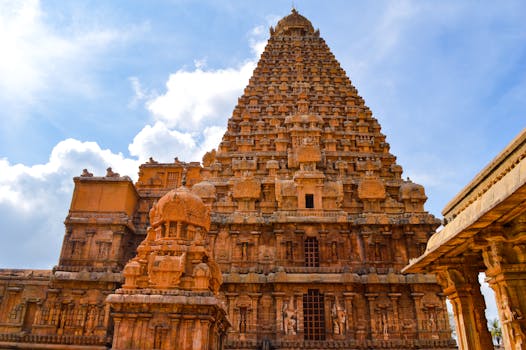

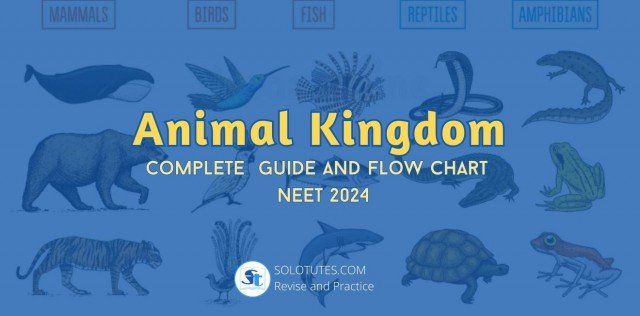
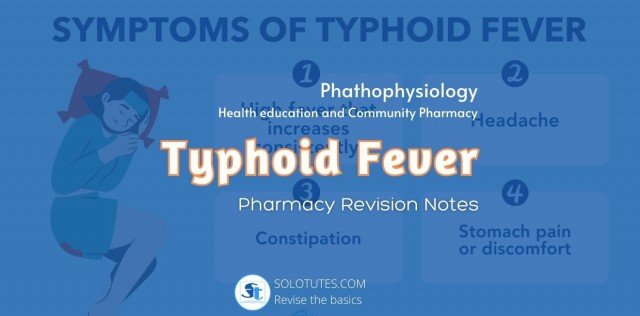



.jpg)
.png)
